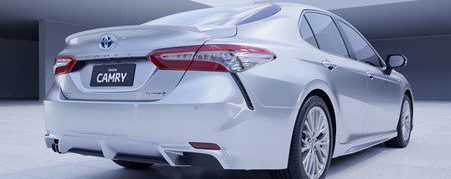Local governments are keen to achieve NetZero status with their vehicle fleets. But there’s one major problem they need to fix first.
After 30 years of consulting to local governments, here’s the one big challenge I always faced:
Highlighting to them the unconventional way they treat their employees’ private-use vehicles.
It was like climbing a mountain. Every time.
Here’s why.
It’s common for some staff (including local government people) to be offered a motor vehicle as part of their remuneration package. Such a vehicle is a fringe benefit to the employee. So it attracts Fringe Benefits Tax (FBT).
In the local government world, it’s common for the employee make an after-tax contribution to this FBT cost.
The employee gets a car. The local government gets their FBT cost offset. Everyone’s happy.
But there’s a problem rotting away underneath.
Local governments don’t include the cost of these employee vehicles as an employment cost.
It’s because the employee’s paying them for the FBT cost of their employer-supplied vehicle, and this contribution now shows as an income. This means the costs of owning and running the vehicle – fuel, tyres, depreciation, and so on – get buried in their fleet budget.
Doing this doesn’t make sense. After all, a council’s vehicle fleet assets are only there to deliver services to their rate payers, not provide staff with company-assigned cars.
And there’s also the undeniable fact that almost all private-use council vehicles have limited or NO operational use other than driving to the odd meeting. They’re really just private-use vehicles.
Adding to the problem is the fact that most councils’ fleet departments are jammed up with activities relating to these light fleets and private-use vehicles, distracting them from their fleet, plant and equipment assets – which is where their focus should be
Now we come to a second major problem with recording these costs this way
It creates an inequality for employees who get provided with motor vehicles as part of their packages.

I’ll use the example of two staff members from the same local council to show you.
Employee A is a local resident of the council they work for. They get a Toyota RAV4 Hybrid as their company car and they drive 20,000 km a year in it. They spend their income in their local area and support local businesses. Their money circulates locally and benefits their local council.
- The car costs $8400 a year in depreciation and maintenance
- The tyres cost $0.025c per kilometre, or $500 per year
- The fuel costs $1980
- Insurance and registration are $1000
- Their contribution to offset FBT: ($8300)
- Net cost to Council: $3,580
Employee B lives in a different local government area (LGA). They also get a Toyota RAV4 Hybrid as part of their remuneration. They travel 30,000 km a year.
And because they live outside their employer’s local government area, they spend little within its community. The neighbouring LGA where they live benefits from their spending.
- Their car costs $8800 a year in depreciation and maintenance
- The tyres cost $0.025c per kilometre, or $750 per year
- The fuel costs $2,376
- Insurance and registration are $1000
- Their contribution to offset FBT: ($8300)
- Net cost to Council: $4,626
The result of this comparison? Employee B benefits by $1,046 a year.
And when you extrapolate these figures over hundreds of vehicles in a local government fleet, the true costs are substantial.
So, what’s the solution?
If you offer these employees a novated lease of cash in lieu of a vehicle, there are plenty of benefits:
Transparency: with the true cost of employment, something state and federal governments did years ago.
Choice: employees can choose the car they want. And if they have a large family and need something bigger than what’s available to them, they can pay a little more.
Flexibility: employees who live close to their work can choose to contribute to a second car OR their family car.
No hand-me-downs: if a staff member leaves the organisation, the replacement employee doesn’t have to ‘inherit’ that person’s company car.
Lower costs and lower risk: the car’s no longer ‘just a council car’, which means excessive maintenance and repair bills from poor treatment will be avoided.
Reduced residual risk: the vehicle asset will be depreciated correctly, which means a money reserve will be accrued to guarantee the funds are ready for when the vehicle is due for replacement.
Smaller fleet: if the employee chooses the take the cash, it could mean one less vehicle on the road, which means lower exhaust emissions and lower risk.
The point I’m making is this: Providing vehicles for private use is NOT the core business of a local council. Doing so adds complexity, it fogs financial transparency, and it’s inequitable for employees.
For employees who qualify for a company vehicle, offer them a mobility allowance in their remuneration packages. Let them choose.
And you can even use this to help get your council fleet to NetZero. Simply incentivise them to choose an electric vehicle.


